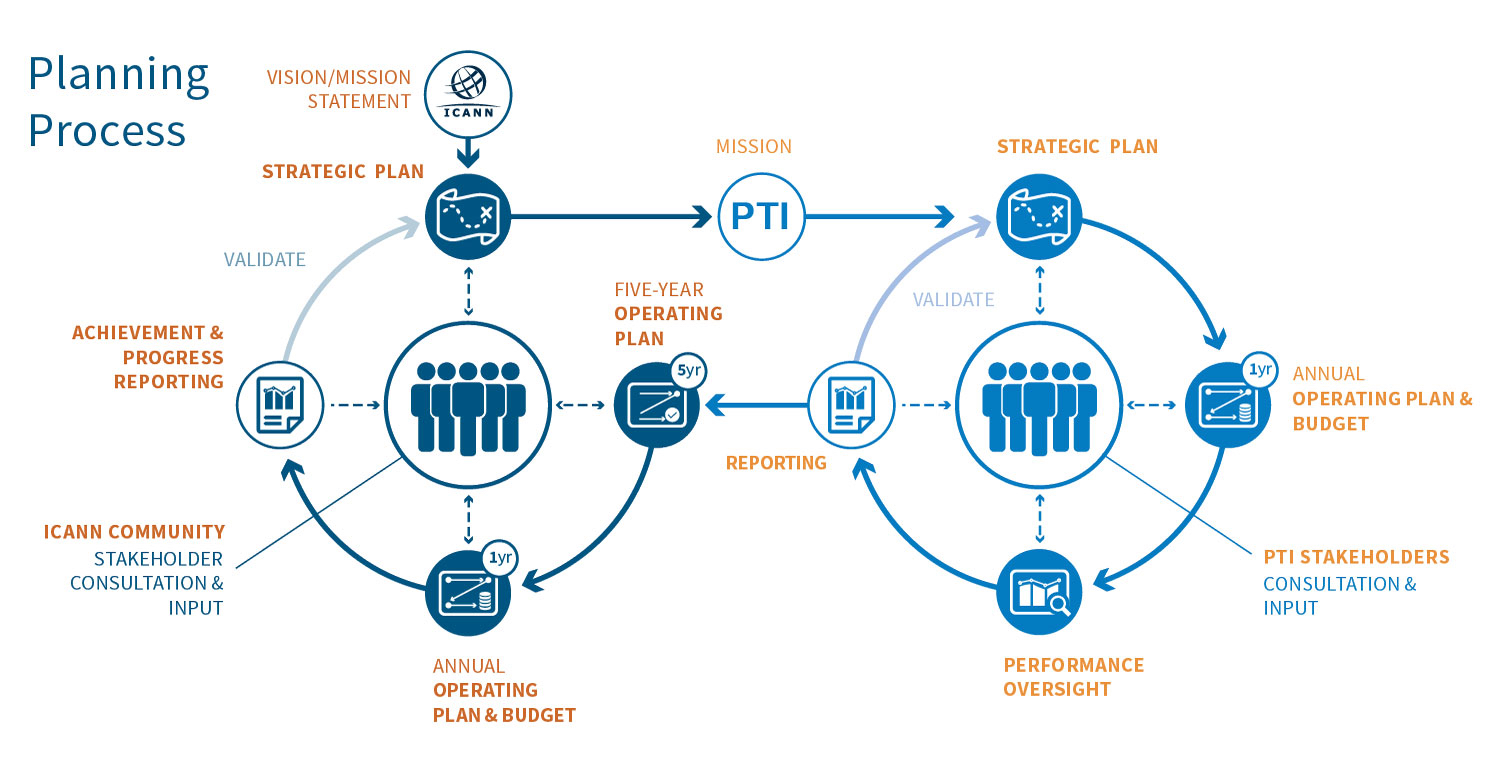ICANN Planning Process
ICANN's Planning Process cycle has a threefold approach encompassing a Strategic Plan, a Five-Year Operating Plan, and an Annual Operating Plan & Budget. The cycle culminates with Achievement & Progress Reporting.
The Five-Year Operating Plan is a new addition to our planning process and is in response to the public's comments.

ICANN's Annual Operating Plan and Budget includes the IANA and PTI Annual Operating Plan and Budget.
The ICANN planning process is continuous and allows for an overlapping of its three components, along with validation of performance:
- Strategic Plan – Developed with community input and updated every five years, 23 June 2019, the Board adopted a Strategic Plan for fiscal years 2021–2025. ICANN Strategic Plan for Fiscal Years 2021-2025. [PDF 2.18 MB]
- Five-Year Operating Plan – Developed with community input and updated annually.
- Annual Operating Plan & Budget – Derived from the Five-Year Operating Plan and from community input.
- Achievement & Progress Reporting – Communicate performance metrics in support of the multi-stakeholder model of Accountability & Transparency.
- See the ICANN org report to the Board and the Annual report
Stakeholder consultation and input is critical and feeds into every aspect of this plan. ICANN will report back to the community against these plans via Quarterly Stakeholder Calls.
ICANN Strategic Plans can be found here.
ICANN Operating Plans and Budgets by Fiscal Year can be found here.
Questions? Email us at: planning@icann.org.
